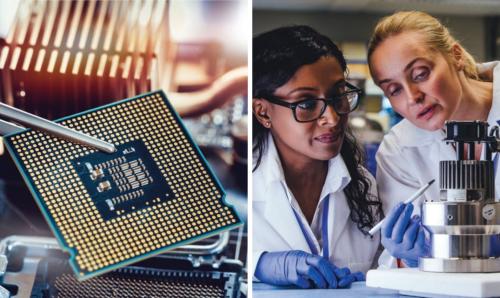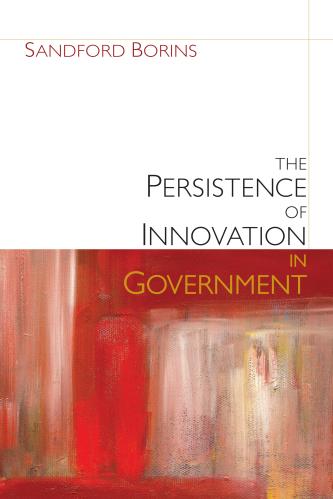Want to learn more? Raj Chetty will discuss his research on January 11 at 1:30 PM EST.
Grace Hopper was an extraordinary human being. She was one of the pioneers of computer science, helping to develop some of the first programming languages used, some of which are still used today. She was also extraordinary because she did these things in a military dominated by men and a field that over time became dominated by men. When she graduated from Vassar College in 1928, less than 5 percent of women were college graduates and roughly 40 percent of bachelor’s degrees were granted to women. Even fewer were in STEM fields. This restricted the number of women who could become a Grace Hopper, limiting the number of inventors and inventions that could have spurred growth in the U.S. economy.
Today, the first step of that problem has been partially fixed. Now, 57 percent of bachelor’s degrees completions are by women, and 35 percent of women aged 25-34 have a bachelor’s degrees. Higher education is not the purview of men primarily. Still, despite being more than the majority on college campuses, women are too scarce in the laboratories. Only 35 percent of STEM bachelor’s degrees completions are by women, and women are increasingly less represented as one moves along the innovation pipeline. They represent just 22 percent of the STEM workforce and just 16 percent of patent grants.
The lack of women in science and innovation fields is not simply a question of fairness or equality; it suggests that the economy is missing out on important potential for productivity growth.
The lack of women in science and innovation fields is not simply a question of fairness or equality; it suggests that the economy is missing out on important potential for productivity growth. The fact that just 16 percent of patents are granted to women demonstrates in some ways how we may be leaving future Grace Hoppers out of the world of innovation and hence missing their insights and inventions.
Finding ways to increase productivity growth is essential to improving living standards over time. Recent research by The Hamilton Project highlighted both the importance of productivity growth over time and many of the challenges facing the United States, ranging from declining federal investments in research and development, to patent backlogs, to a lack of women and under-represented minorities in innovation activity. New research has suggested that innovation may get more difficult over time as easier innovations have been made and research requires more investment for the same output. Improving innovation in the United States may come from a range of solutions. Some of this may require changes to the process of patenting, or to how our national labs support innovative enterprises, but one important step is to make sure that people with a talent for and interest in inventing and creating new innovative products and processes that will drive our economy over time have the opportunity to do so.
Recent research from Raj Chetty’s team of economists at Stanford looked at “lost Einsteins”—people who would have had high-impact inventions if they had become inventors. They found that children with parents in the top 1 percent of incomes are ten times more likely to become inventors than children whose parents earn below the median income. Their data also showed that differences in ability explained very little of the gap, and that children who are exposed to innovation at a young age were far more likely to become inventors themselves. In fact, women were more likely to invent if they grew up around female inventors, but exposure to male inventors had no effect.
Research by Lisa Cook at Michigan State highlights the importance of involving women in innovation pipelines. When involved in patenting activity, women are roughly as likely as men to commercialize these ideas, suggesting that the ideas are there when the opportunity is. Further, mixed gender teams are more likely to commercialize patents than single sex teams. But, she notes that research shows both women and African American science and engineering PhDs are more likely to leave the field than other science and engineering PhDs, suggesting even when these groups are kept in degree programs they are disproportionately lost from the innovation pipeline.
Innovations and patents disproportionately come from those with advanced education (70 percent of high quality patent holders have at least a master’s degree and over 90 percent have at least a bachelor’s degree). Over the last half century, the U.S. education system has incorporated women opening up a range of job and career possibilities. But women are still not channeled into STEM fields at a rate that would ensure that all the future Grace Hoppers have an opportunity to revolutionize our economy in the way she revolutionized computer science. These holes in the innovation pipeline are compounded by barriers based on race or socioeconomic status and will be made even worse if the U.S. restricts the flow of immigrants who have often contributed to innovation here. Future living standards will be determined not just in boardrooms today but in classrooms and laboratories of the future. Who is in those rooms matters.
In general, U.S. patenting activity is still too exclusive a club. Women and minorities are unduly left out as are those from poorer households or those that do not grow up near innovative activity. Redoubling efforts in our education system to foster all talented youths and keeping talented individuals in the innovation pipeline will be essential to maximizing the innovative potential of the country.










Commentary
How many Grace Hoppers have been lost from the innovation pipeline?
January 8, 2018